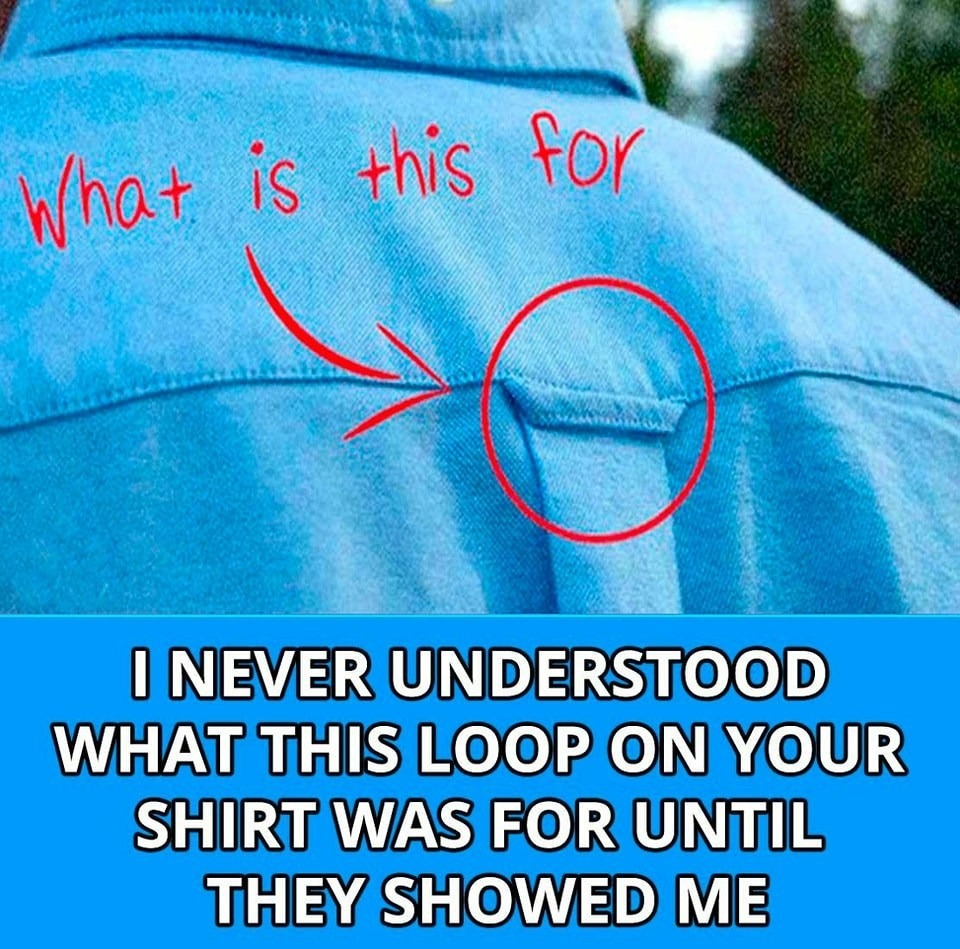
You’ve worn button-down shirts for years — maybe even every day — but have you ever noticed that small fabric loop stitched at the back, just below the collar ?
It’s not a flaw. It’s not a leftover from manufacturing.
This tiny detail — commonly known as the “locker loop” — has a rich, practical, and surprisingly stylish history that spans naval decks, Ivy League campuses, and modern fashion runways .
So what is it for? And why is it still on shirts today?
Let’s unravel the mystery behind the back loop on button-down shirts — and why this small feature says a lot about tradition, function, and subtle style.
What Is the Locker Loop?
The locker loop (also called a hanger loop , sweater loop , or backstay ) is a small strip of fabric sewn vertically between the shoulders on the inside of a dress or casual shirt.
While it’s most commonly found on Oxford cloth button-downs (OCBDs) , it also appears on some polos, blazers, and even women’s shirts.
At first glance, it seems pointless — but its origins are deeply rooted in practicality and prestige .
The Naval Origins: A Sailor’s Best Friend
The locker loop’s story begins in the British Royal Navy in the early 20th century.
Sailors needed a way to hang their shirts quickly and securely in tight, damp quarters — especially during rough seas.
Instead of using fragile hangers that could break or fall, they used the back loop to:
Hang shirts from hooks in lockers or cabins
Keep uniforms neat and wrinkle-free
Prevent shirts from blowing overboard in strong winds
This simple feature saved time, space, and sanity — and soon became standard on naval uniforms.
The Ivy League Takeover: From Function to Fashion
In the 1950s and 60s, American prep culture adopted the British-style button-down collar shirt — and with it, the locker loop .
Colleges like Yale, Harvard, and Princeton became hotbeds of Ivy League style , where the OCBD was a symbol of refinement, tradition, and understated cool .
The locker loop, once a utilitarian naval feature, became a subtle badge of authenticity — a sign that your shirt was the “real deal,” not a cheap imitation.
Fun fact: Many Ivy League students would hang their shirts on bedposts or hooks in dorm rooms — just like sailors did.
Modern Uses: Why the Loop Still Exists Today
While most of us aren’t sailing ships or living in dorms, the locker loop has survived into modern fashion — and people have found creative new uses for it.
1. Hanging the Shirt Properly
The original purpose lives on — the loop lets you hang your shirt neatly without stretching the shoulders, especially useful in tight closets.
2. Tucking in a Tie or Scarf
Some men use the loop to secure the narrow end of a tie , preventing it from flapping around.
Others tuck a pocket square or scarf through it for a quirky, preppy touch.
3. Hanging a Lanyard or Badge
In workplaces or events, people use the loop to clip ID badges, keys, or earbuds — keeping essentials close and hands-free.
4. A Fashion Statement
Designers like Ralph Lauren, Brooks Brothers, and J.Crew keep the loop on their shirts as a nod to heritage and authenticity .
For fashion enthusiasts, it’s a detail that signals quality and tradition — a quiet flex of style intelligence.
Do All Shirts Have a Locker Loop?
No — and its presence (or absence) can tell you a lot about a shirt.
✅ Common on:
Oxford cloth button-downs (OCBDs)
Preppy or heritage-style shirts
Brands with Ivy League or nautical roots
❌ Rare on:
Slim-fit dress shirts
Budget or fast-fashion brands
European or minimalist designs
Pro Tip: If you see a locker loop on a shirt, it’s often a sign of attention to detail and classic styling .
Frequently Asked Questions
❓ Can I cut off the locker loop?
Yes — many people do if they find it unnecessary. But removing it may reduce the shirt’s resale value or vintage appeal.
❓ Do women’s shirts have locker loops?
Some do — especially in menswear-inspired or tailored women’s shirts . It’s less common but growing in popularity.
❓ Is the loop only for button-downs?
Mostly — but you’ll also find it on polo shirts, blazers, and field jackets — especially those with military or prep heritage.
❓ Does the loop help with wrinkles?
Indirectly. By allowing the shirt to hang evenly, it helps maintain shape and reduce creasing .
Final Thoughts
That little loop on the back of your shirt isn’t just a leftover from the past — it’s a symbol of history, function, and timeless style .
From British sailors braving the seas to Ivy League students defining American prep , the locker loop has sailed through time — not because it’s flashy, but because it’s meaningful .
So next time you slip on a button-down, take a second to notice that small loop. It’s more than a detail — it’s a story stitched into your wardrobe .
And now that you know its secret, you’ll never look at a shirt the same way again.